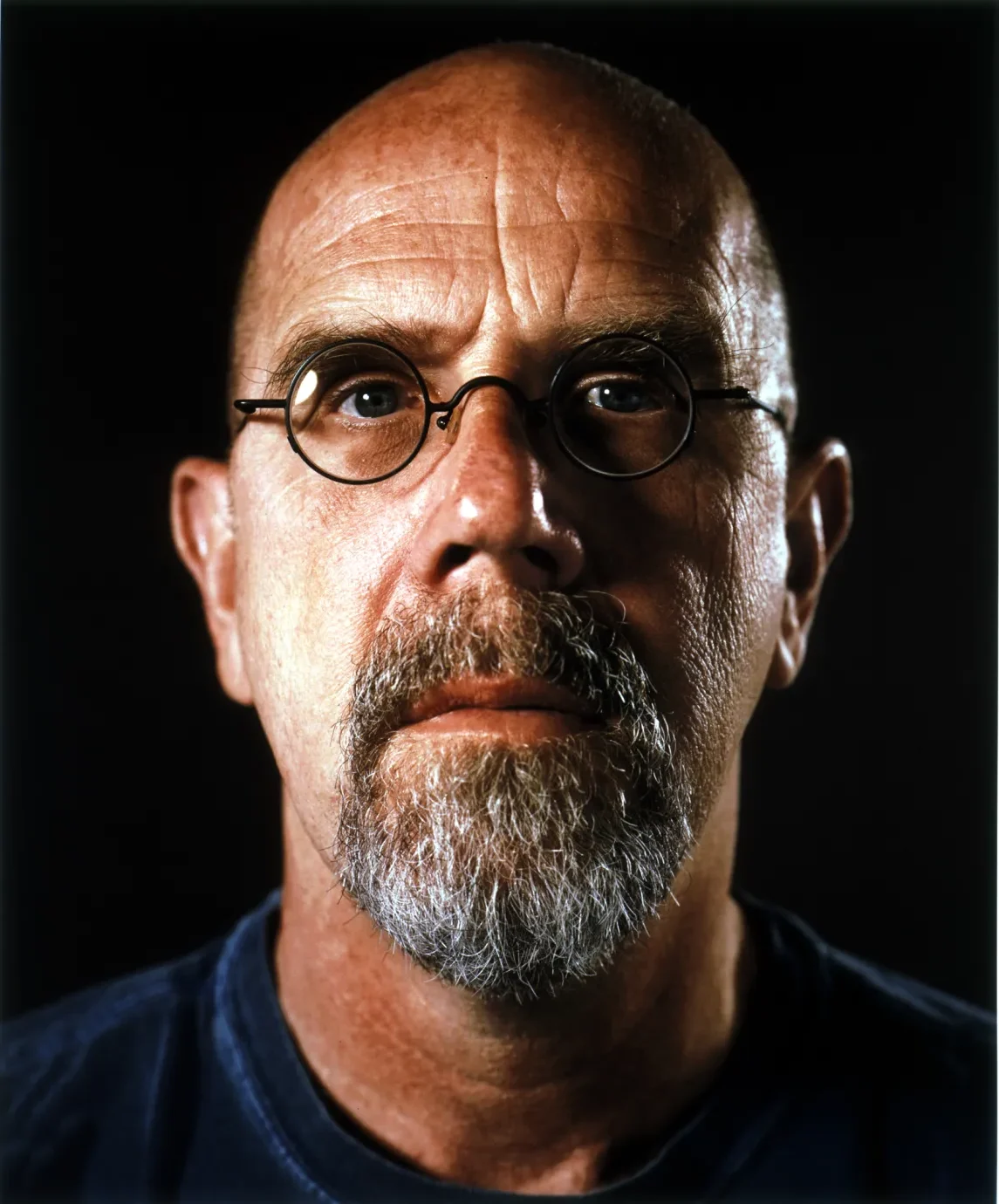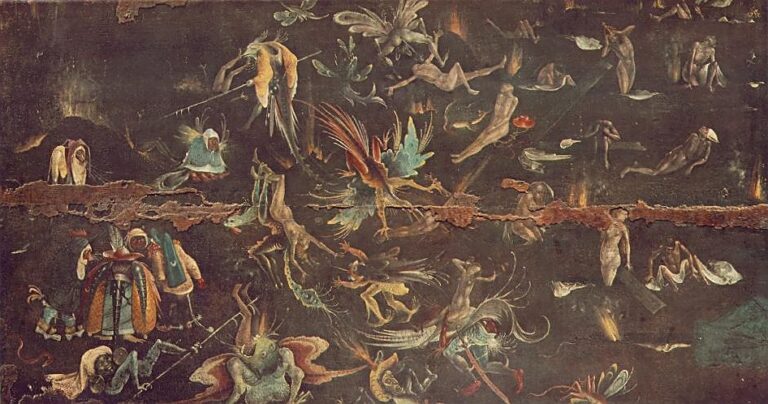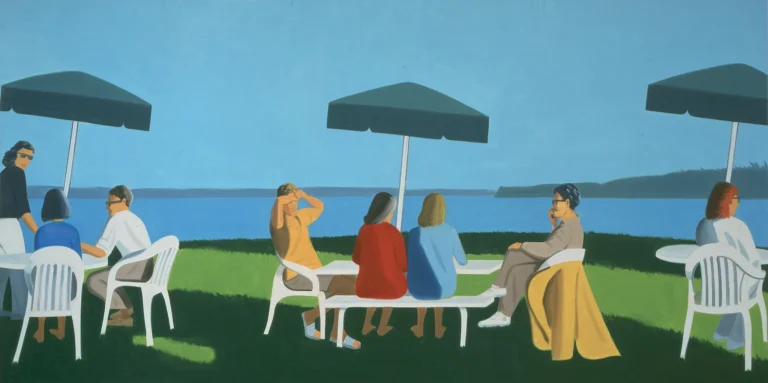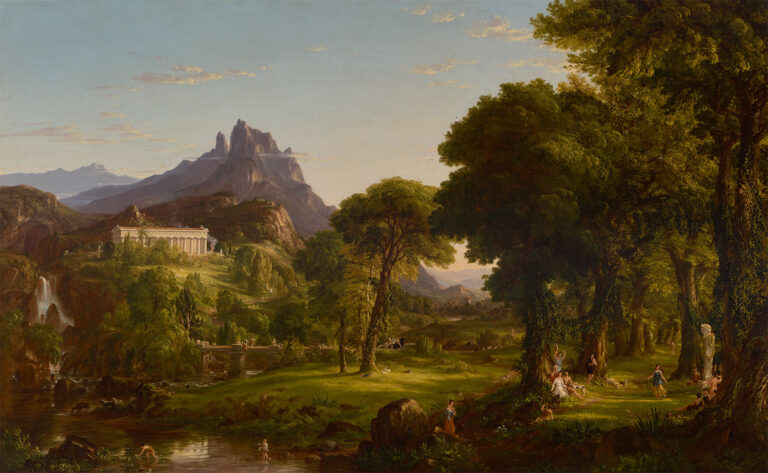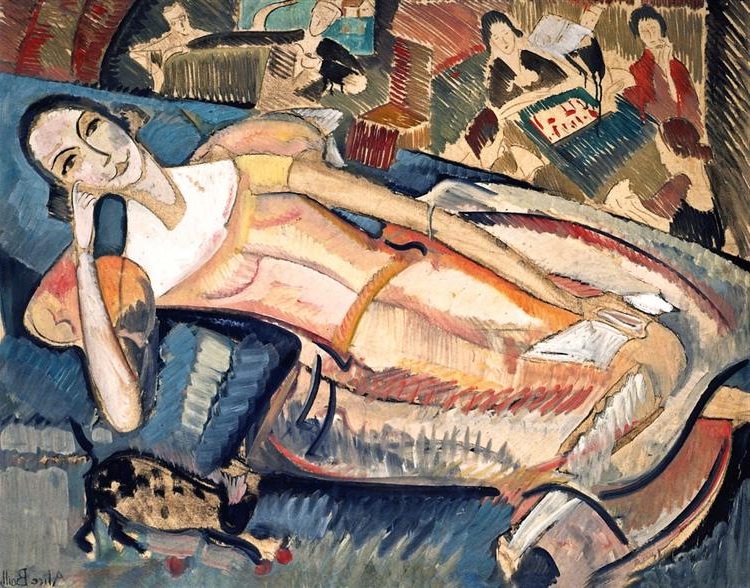Chuck Close: American Painter Known for Photorealistic Portraits
Born: July 5, 1940, Monroe, Washington, U.S.
Death: August 19, 2021, Oceanside, New York, U.S.
Art Movement: Photorealism (Super-Realism, Hyper-Realism)
Nationalité : Américain
Influenced By: John Patric
Institution: Academy of Fine Arts Vienna
Chuck Close: American Painter Known for Photorealistic Portraits
Early Life and Education of Chuck Close
Chuck Close faced many challenges as a child but showed artistic talent from a young age. His determination and passion for art helped him overcome obstacles.
Birth and Upbringing
Charles Thomas Close was born on July 5, 1940, in Monroe, Washington. As a child, Close struggled with severe dyslexia, which made traditional schoolwork difficult. Despite these challenges, he found solace and success in making art.

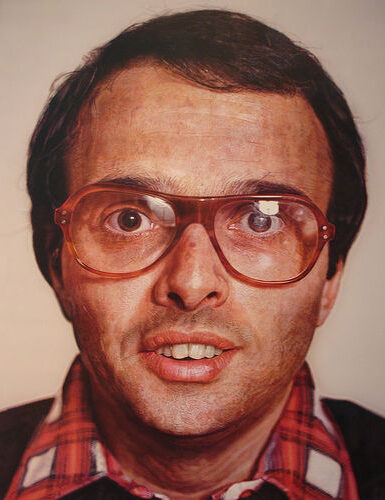
At age 14, Close attended an exhibition of Jackson Pollock’s abstract paintings, which proved to be a pivotal moment. This experience inspired him to pursue a career as a painter. His parents supported his artistic interests from an early age, with Close beginning formal art lessons during childhood.
Academic Pursuits
Close studied at the University of Washington, where he earned his Bachelor of Arts degree. He then continued his education at Yale University, receiving his Master of Fine Arts in 1964.
At Yale, Close developed his technical skills and began exploring his artistic voice. After completing his MFA, he accepted his first teaching position at the University of Massachusetts, Amherst. During this period, Close began to move away from abstract expressionism and gestural styles.
While teaching at UMass, Close received his first solo exhibition in 1967, marking an important milestone in his career. This period saw him developing the photorealist portrait style that would eventually make him famous.
Style artistique et techniques
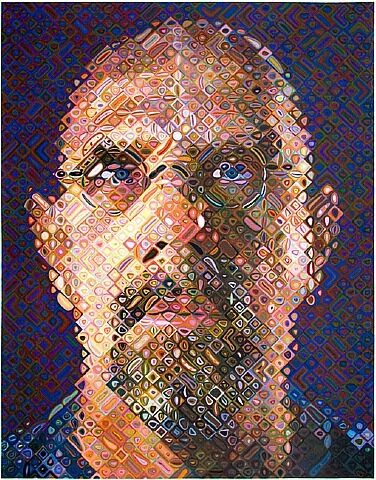
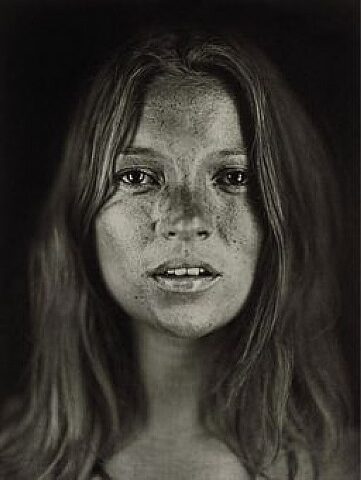
Chuck Close revolutionized portrait painting through his distinctive methodologies and technical innovations. His approach combined mathematical precision with artistic vision, creating works that blur the line between photography and painting.
Development of Photorealism
Close emerged as a figure de proue in Photorealism during the late 1960s. He developed a unique grid system, breaking photographs down into small squares that he then transferred onto large canvases. This meticulous approach allowed him to create enormous face paintings with extraordinary detail.
Unlike many photorealists, Close didn’t aim for perfect mechanical reproduction. His early black-and-white portraits like “Big Self-Portrait” (1967-1968) demonstrated his commitment to capturing every facial detail – from pores to stubble.
Close’s technique evolved after his partial paralysis in 1988. He adapted his grid method, filling each cell with colorful shapes that, when viewed from a distance, formed cohesive portraits.
Innovations in Printmaking
Close pushed the boundaries of printmaking throughout his career. He mastered mezzotint, a challenging technique involving scraping and burnishing a metal plate to create tonal effects.
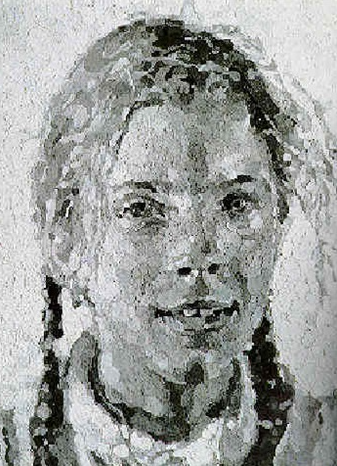
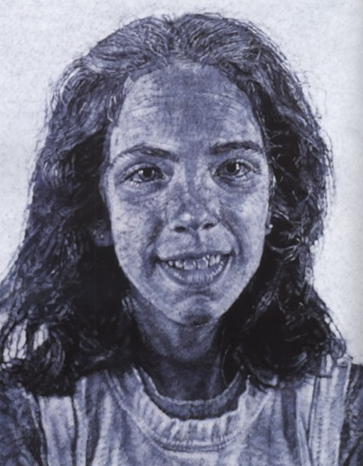
His experiments extended to handmade paper pulp works, creating colorful, textured portraits. These pieces combined printing with painting by applying wet paper pulp in a gridded format.
Close’s fingerprint series represented another innovative approach. He pressed his inked fingertips onto the canvas in grid patterns, creating portraits from these personal marks.
His print work often involved intense collaboration with master printers, developing new processes that expanded the possibilities of the medium.
Focus on Self-Portraits
Self-portraiture remained a constant throughout Close’s artistic journey. His first major work, “Big Self-Portrait” (1967), established this ongoing exploration.
Close returned to his own image repeatedly, documenting his aging process and artistic evolution. These self-portraits serve as a visual autobiography, tracking both physical changes and artistic development.
After his health crisis in 1988, his self-portraits took on new significance. They documented his resilience and adaptation to physical limitations, showing how his style evolved from precise photorealism to a more expressive, colorful approach.
His self-portraits allowed him to experiment with new techniques before applying them to other subjects, making them both personal documents and technical explorations.
Héritage et impact
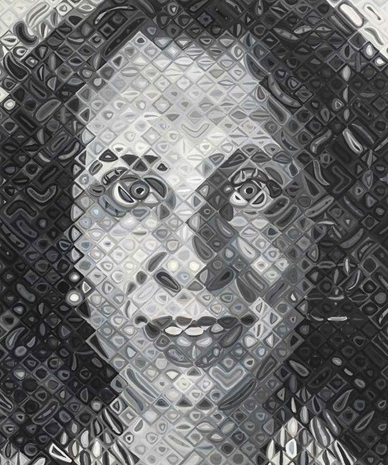
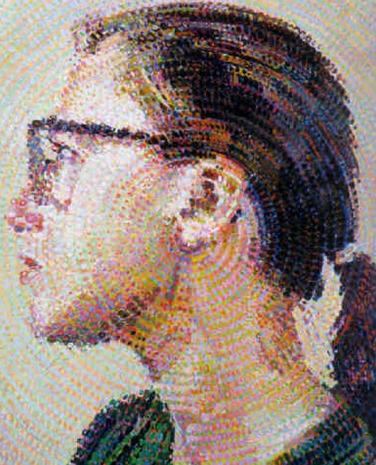
Chuck Close’s distinctive grid-based portraiture revolutionized the art world. His techniques innovantes and perseverance through physical challenges established him as one of the most influential American artists of the late 20th century.
Influence sur l'art contemporain
Close’s methodical approach to portraiture transformed how artists think about representation. His large-scale, photorealistic paintings broke new ground, inspiring generations of artists to explore the relationship between photography and painting.
Many contemporary artists cite Close as a direct influence on their work. His grid method became particularly significant in art education, teaching students to see complex images as manageable components.
Art critic Robert Storr highlighted Close’s importance, noting how his work bridged the gap between abstract expressionism and hyperrealism. This positioning gave Close a unique place in art history.
After becoming quadriplegic in 1988, Close adapted his technique rather than abandoning his art. This resilience added another dimension to his legacy, showing how limitations can spark creativity.
Collaborations et expositions
Close’s work extended beyond painting into printmaking, where he pushed technical boundaries. His prints demonstrated the same attention to detail and experimental approach as his paintings.
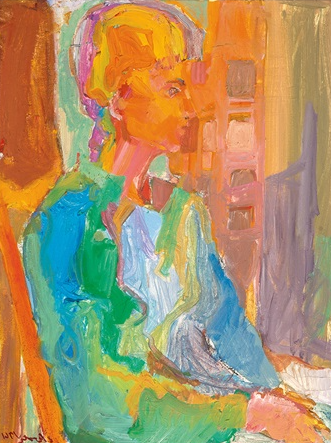
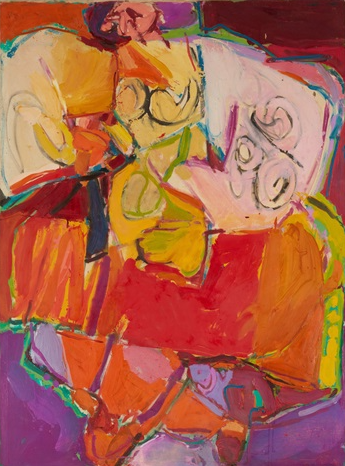
His collaborative nature led to partnerships with master printers and other artists. These collaborations produced innovative works that expanded the possibilities of printmaking techniques.
Major museums worldwide, including the Museum of Modern Art and the Whitney Museum, have hosted retrospectives of Close’s work. These exhibitions cemented his reputation as a pivotal figure in American art.
Close’s portraits of fellow artists created a visual record of the artistic community of his time. These works serve as both art and historical documentation.
His accessible approach to discussing his process made him a favorite among curators and art educators, further extending his influence beyond gallery walls.
Questions fréquemment posées
Chuck Close remains one of the most influential artists in contemporary portraiture. His unique techniques, personal challenges, and artistic evolution have shaped his significant contributions to the art world.
What is the significance of Chuck Close’s approach to portraiture?
Chuck Close revolutionized portraiture by breaking down photographs into grid systems. He transformed faces into abstract patterns that, when viewed from a distance, formed recognizable images.
His work challenged traditional notions of portraiture by focusing on process rather than emotional expression. Close’s methodical approach created a new visual language that bridged abstraction and representation.
His large-scale portraits forced viewers to reconsider how they perceive human faces and identity.
How has Chuck Close’s personal health influenced his artistic work?
Close’s art was profoundly shaped by his neurological conditions. He had prosopagnosia (face blindness), which ironically led him to study faces intensely through his art.
In 1988, Close suffered a spinal artery collapse that left him partially paralyzed. This physical limitation forced him to adapt his technique, leading to his iconic gridded, pixelated style that became his signature.
Rather than abandoning art after his paralysis, Close developed new methods of painting with a brush strapped to his wrist.
Can you name some of the major techniques Chuck Close used in his paintings?
Close pioneered the grid method, transferring photographs to canvas using precise mathematical scaling. He meticulously painted each cell with airbrush techniques in his early works.
After his paralysis, Close developed a technique using a mechanical easel system. This allowed him to rotate canvases and reach all areas despite his limited mobility.
He experimented with fingerprinting, pulp paper, and tapestry in later years. Close’s dot-based method created vibrant, mosaic-like portraits built from individual colored cells.
What are some notable exhibitions that featured Chuck Close’s work?
The Museum of Modern Art in New York hosted Close’s first major retrospective in 1998. This comprehensive exhibition highlighted his evolution from photorealism to his grid-based portraits.
The Walker Art Center in Minneapolis organized “Chuck Close: Self-Portraits 1967-2005,” showcasing his ongoing exploration of his own image through various techniques.
His work has been featured at the Guggenheim Museum, the Metropolitan Museum of Art, and numerous international venues.
In what ways did Chuck Close’s work evolve over the course of his career?
Close’s early work from the late 1960s featured hyperrealist black and white portraits. He then moved to color photorealism in the 1970s with exacting detail.
After his paralysis in 1988, his style shifted toward a more colorful, cellular approach. His later works became increasingly abstract with vibrant, puzzle-like components that formed recognizable images from a distance.
Throughout his career, Close maintained his focus on the human face while continually reinventing his technical approach.
How has Chuck Close contributed to the field of photorealism?
Close helped establish photorealism as a legitimate artistic movement in the late 1960s. His work demonstrated that photography-based painting could be conceptually rich and technically innovative.
He expanded photorealism beyond mere reproduction by introducing his grid system. This approach revealed the constructed nature of images while maintaining their representational quality.
Close’s influence extends beyond his own work to generations of artists. These artists explore the relationship between photography, painting, and perception.


